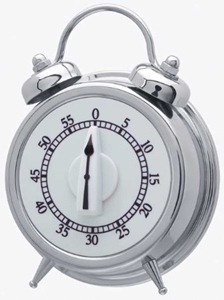 “Resumes should…” When sentences begin with rules about resumes, beware. Many of these rules are outdated, not true, or simply could harm your chances of getting the job you want.
“Resumes should…” When sentences begin with rules about resumes, beware. Many of these rules are outdated, not true, or simply could harm your chances of getting the job you want.
Myth #6: It is important to have your resume look like all other resumes. There is tremendous pressure to conform when it comes to resume writing. Imagine what employers go through at job fairs. For 4-8 hours all they see is gray and black suits, white shirts, conservative ties. By the end of the day, individuals have blurred into a faceless mass. It’s the same with resumes. After seeing the 500th chronological resume in 10 point Times New Roman font that says “seeking an upwardly mobile position in a stable, growing company where my skills will be utilized,” a reader’s eyes begin to glaze over. Think back to why you’ve beaten others to win previous jobs. Was it because you were the same as everyone else? No, it was because you were different somehow. Give your resume the same chance. Be different (not crazy, different). Try a new font, a new layout, a new format, quotes from performance reviews, graphics or a border.
Myth #7: You must have a resume to get a job. Many job seekers have a tendency to depend too much on their resume. Richard Bolles, author of What Color Is Your Parachute, contends that you don’t need a resume to get a job. Instead, you should consider it a leave-behind document. If you plan to find a job via the mail, then you do need a resume. However, if you are willing to find a job the old-fashioned way: via your contacts, by getting out in the community, by building relationships and getting referrals to people who have the power to hire you, you will relinquish your dependence and focus on a resume.
Myth #8: A resume and a C.V. are the same thing. Many Americans use the term C.V. to make them sound more important. However, used incorrectly, it often has the opposite effect! A resume and a C.V. are different documents, and are used in different situations. C.V., curriculum vitae, means “the course of one’s life.” In the United States a C.V. is used in academic and scientific fields, never in business. However, in European countries it is used in business instead of a resume. This sometimes causes confusion, when someone with European connections refers to C.V. in a business sense. An academic C.V. usually list all the publications, articles, books, courses, and conferences authored by the job candidate. They are usually straightforward and focused on the life’s work in one specific field.
Myth #9: An objective statement or summary is not necessary—just list the facts. If you do not clearly focus and define what you do for  the employer, you are asking them to do “work” to interpret the resume. It’s not only rude, it is unwise. With only 8-15 seconds to read and make a decision on a resume, if there is any ambiguity, you lose. Resumes are often reviewed by a low-level person in the organization whose responsibility is to throw most of the resumes away and find just a few to forward on. Chances are, if your resume is not specific, the one right behind it might be. Also, without an opening objective statement, profile or summary the reader will assume that you want another job just like or one level above your last job.
the employer, you are asking them to do “work” to interpret the resume. It’s not only rude, it is unwise. With only 8-15 seconds to read and make a decision on a resume, if there is any ambiguity, you lose. Resumes are often reviewed by a low-level person in the organization whose responsibility is to throw most of the resumes away and find just a few to forward on. Chances are, if your resume is not specific, the one right behind it might be. Also, without an opening objective statement, profile or summary the reader will assume that you want another job just like or one level above your last job.
Myth #10: Giving your resume to as many people as possible is an effective way to get a job. Right idea, wrong execution. The best way to find a job is through other people. However, your method needs to be slightly different. Realize that while others do want to help, sometimes their good intentions fall flat. In other words, your resume ends up in the drawer, or buried somewhere under their incomplete expense reports. In the job hunting game, you must always keep control and take the responsibility for where your resume needs to go. Enlist others to help you differently. Ask for specific help, “Do you know anyone who works in Public Relations?” Once you have created a target, get names and contacts, and get permission to use your contact’s name. Then draft a letter to the contact, explaining how you got their name, enclosing your resume and telling them you will follow up with a phone call. It’s more work, but is the only way to make sure it gets done.
One last myth: Write your resume yourself! Much like an accountant specializes in financial data, a certified professional resume writer is trained and experienced in the “language” of resume writing. From format, word choice, layout, positioning, strategy, to overcoming problems and challenges that each client presents, a resume writer applies their skills to your unique situation. Most workers are never trained or study “how” to write a resume; in fact, creating a marketing document may be something you’ve never learned. It becomes even tougher when the subject of the document is YOU and the marketing target is a new and better job. Matching these two components in a concise and impactful document is like walking along a tightrope between your past and your future. Look into getting assistance from a professional. It takes time to craft the resume. It takes trust and openness. It takes lots of questioning and clarification. It takes lots of rewriting and editing. Together we can present a proposal for that job and get you the interview you want!
Professional resume writer resources:
The National Resume Writer’s Association (NRWA) Professional Association of Resume Writers (PARW)
Great post! particularly in this economy, I believe these tips will help anyone stand out from the crowd when applying for a job!